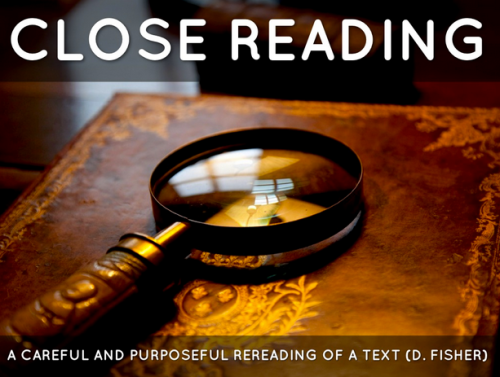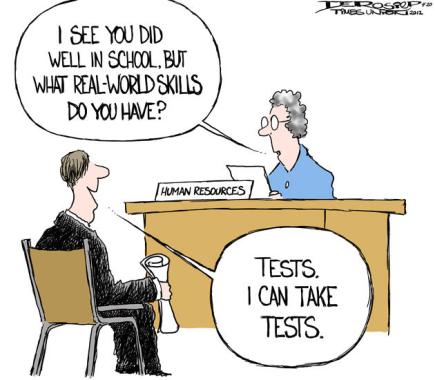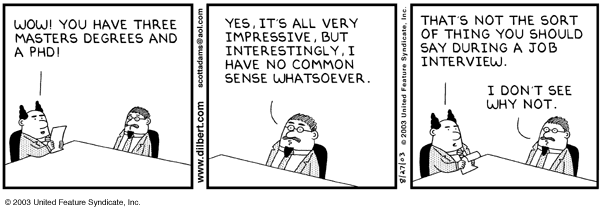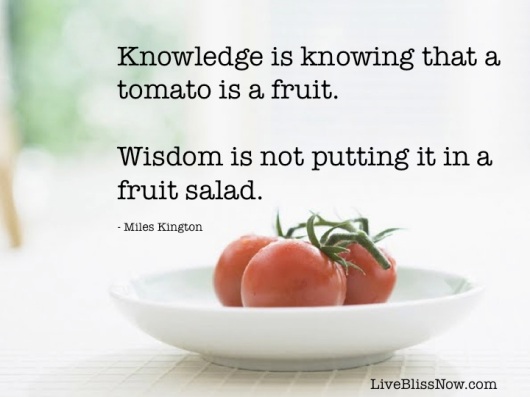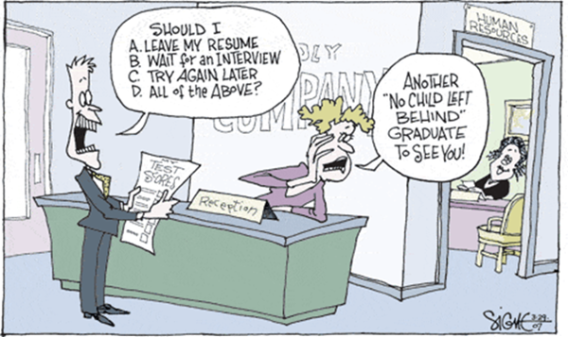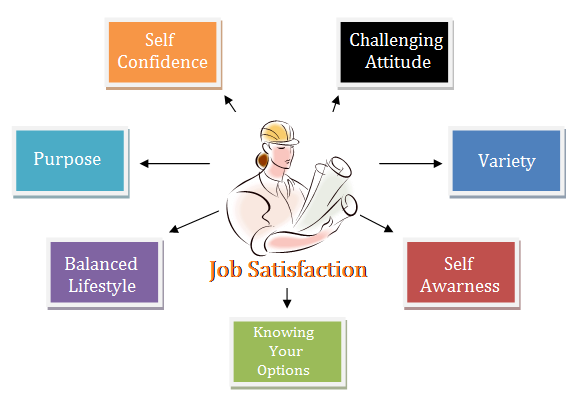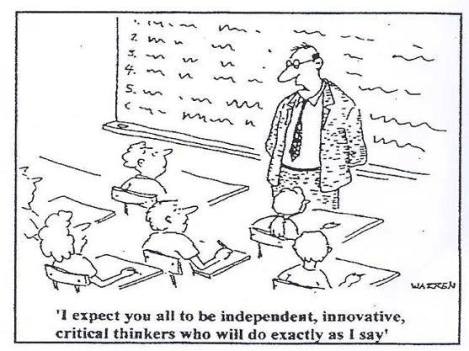The Common Core College and Career Readiness Anchor Standards for Reading include;
Read closely to determine what the text says explicitly and to make logical INFERENCES from it; cite specific textual evidence when writing or speaking to support CONCLUSIONS drawn from the text….
As 2014 comes to a close I will refrain from offering context or commentary regarding the following selection of quotes and in accordance with the close reading mandate of the Common Core allow the text to speak for itself so readers can make their own inferences and draw their own conclusions.
Implemented correctly, the common standards and assessments can vault education over the barrier of low-level test preparation and toward the goal of world-class learning outcomes for all students. Implemented poorly, however, the standards and assessments could result in accountability on steroids, stifling meaningful school improvement nationwide.
Building on the Common Core, David T. Conley March 2011
… these standards are worthy of nothing if the assessments built on them are not worthy of teaching to, period…
It was Lauren who propounded the great rule that I think is a statement of reality, though not a pretty one, which is teachers will teach towards the test. There is no force strong enough on this earth to prevent that. There is no amount of hand-waving, there‟s no amount of saying, “They teach to the standards, not the test; we don‟t do that here.” Whatever. The truth is – and if I misrepresent you, you are welcome to take the mic back. But the truth is teachers do.
Tests exert an enormous effect on instructional practice, direct and indirect, and its hence our obligation to make tests that are worthy of that kind of attention. It is in my judgment the single most important work we have to do over the next two years to ensure that that is so, period.
2011 Keynote Speech; Institute for Learning, David Coleman
The current focus on testing has tended to make test results the goal of the system, rather than a measure. The change in goal means recognizing that a test is only measure. Using tests as the goal infringes Goodhart’s Law: when measure becomes the goal, it ceases to be an effective measure.
The Single Best Idea for Reforming K-12 Education, Steve Denning 9/1/11
Most VAM studies find that teachers account for about 1% to 14% of the variability in test scores, and that the majority of opportunities for quality improvement are found in the system-level conditions. Ranking teachers by their VAM scores can have unintended consequences that reduce quality. (2)…
A decision to use VAMs for teacher evaluations might change the way the tests are viewed and lead to changes in the school environment. For example, more classroom time might be spent on test preparation and on specific content from the test at the exclusion of content that may lead to better long-term learning gains or motivation for students. (6)…
The majority of the variation in test scores is attributable to factors outside of the teacher’s control such as student and family background, poverty, curriculum, and unmeasured influences. (7)…
American Statistical Association has just released a very important document on Value Added Methodologies Robert D. Skeels 4/9/14
Our first realization was that test scores add relatively little to our ability to predict the success of our students…In addition, we know that some potential students are deterred from applying to colleges that require a test score because they are not comfortable taking standardized tests….
The Case Against the SAT, Thomas Rochon 9/6/13
New York City’s comptroller plans to release a report on Monday quantifying what student advocates have long suspected: that many public schools in the city do not offer any kind of arts education, and that the lack of arts instruction disproportionately affects low-income neighborhoods…
Between 2006 and 2013, spending on arts supplies and equipment dropped by 84 percent, the report said. When money is tight, arts education is often one of the first subjects to be sidelined, the report noted. It said the trend had accelerated as schools focused more on meeting accountability standards, shifting their resources from subjects seen as nonessential, like arts, to preparation for English and math tests…
Arts Education Lacking in Low-Income Areas of New York City, Report Says Vivian Yee 4/7/14
Over the last three decades, while schoolchildren K-12 have become better test-takers, they’ve also become less imaginative, according to many experts in education, including Kyung Hee Kim, a professor of education at the College of William and Mary.
In 2011, she analyzed scores from the Torrance Tests of Creative Thinking and found that: “children have become less emotionally expressive, less energetic, less talkative and verbally expressive, less humorous, less imaginative, less unconventional, less lively and passionate, less perceptive, less apt to connect seemingly irrelevant things, less synthesizing, and less likely to see things from a different angle.”…
Why Playful Learning Is The Key To Prosperity, John Converse Townshend 4/1014
The chief technology officer of eBay sends his children to a nine-classroom school here. So do employees of Silicon Valley giants like Google, Apple, Yahoo and Hewlett-Packard.
But the school’s chief teaching tools are anything but high-tech: pens and paper, knitting needles and, occasionally, mud. Not a computer to be found. No screens at all. They are not allowed in the classroom, and the school even frowns on their use at home…
This is the Waldorf School of the Peninsula, one of around 160 Waldorf schools in the country that subscribe to a teaching philosophy focused on physical activity and learning through creative, hands-on tasks. Those who endorse this approach say computers inhibit creative thinking, movement, human interaction and attention spans…
“I fundamentally reject the notion you need technology aids in grammar school,” said Alan Eagle, 50, whose daughter, Andie, is one of the 196 children at the Waldorf elementary school; his son William, 13, is at the nearby middle school. “The idea that an app on an iPad can better teach my kids to read or do arithmetic, that’s ridiculous.”
A Silicon Valley School That Doesn’t Compute Matt Richtel 10/22/11
The Future Ready District Pledge is designed to set out a roadmap to achieve that success and to commit districts to move as quickly as possible towards our shared vision of preparing students for success in college, careers and citizenship…
Future Ready districts align, curate, create, and consistently improve digital materials and apps used in the support of learning. Future Ready districts use carefully selected high quality digital content that is aligned to college and career ready standards as an essential part of daily teaching and learning.
Future Ready District Pledge, US Department of Education
According to government projections released last month, only three of the 30 occupations with the largest projected number of job openings by 2020 will require a bachelor’s degree or higher to fill the position — teachers, college professors and accountants. Most job openings are in professions such as retail sales, fast food and truck driving, jobs which aren’t easily replaced by computers…
…Any job gains are going mostly to workers at the top and bottom of the wage scale, at the expense of middle-income jobs commonly held by bachelor’s degree holders. By some studies, up to 95 percent of positions lost during the economic recovery occurred in middle-income occupations such as bank tellers, the type of job not expected to return in a more high-tech age.
1 in 2 new graduates are jobless or underemployed, AP 4/23/12
…In addition to the diverse pathways students take while working toward their educational goals, students who enroll in college full time immediately after high school no longer represent the majority among post secondary college students (Choy, 2002; Horn & Carroll, 1997; Reeves, Miller, & Rouse, 2011). Rather, many students delay college enrollment, enroll in college part time, and/or have a full-time job while enrolled.
To balance the responsibilities of family, work, and school, these students often take educational routes that require a longer time to a post secondary credential, such as enrolling part time, attending institutions with shorter terms, and occasionally stopping out…
Moreover, institutional accountability measures based on conventional graduation rates may underestimate the complexity and cost associated with improving outcomes and may disadvantage institutions, such as many community colleges, that enroll large numbers of students following nontraditional pathways (Belfield, Crosta, & Jenkins, 2013)…
Completing College: A National View of Student Attainment Rates – Fall 2007 Cohort National Student ClearingHouse Research Center 12/15/13
Americans have a host of postsecondary options other than a four-year degree—associate degrees, occupational certificates, industry certifications, apprenticeships. Many economists are bullish about the prospects of what they call “middle-skilled” workers. In coming years, according to some, at least a third and perhaps closer to half of all U.S. jobs will require more than high school but less than four years of college—and most will involve some sort of technical or practical training…
Today’s conventional wisdom about economic mobility in the U.S. is gloomy and growing gloomier. We’re told that good jobs are disappearing, that less educated workers have bad work habits, that the U.S. is falling behind other countries…
Who’s right? Surely, the answer is up to us—and not just the strivers alone. One place to start would be by showing some respect for practical training. As millions of Americans know, even in a knowledge economy, countless valuable career skills can be learned outside a college classroom.
This Way Up: Mobility in America,Tamar Jacoby 7/18/14
And if graduates had an internship or job in college where they were able to apply what they were learning in the classroom, were actively involved in extracurricular activities and organizations, and worked on projects that took a semester or more to complete, their odds of being engaged at work doubled as well…
The data in this study suggest that, as far as future worker engagement and well-being are concerned, the answers could lie as much in thinking about aspects that last longer than the selectivity of an institution or any of the traditional measures of college…
Life in College Matters for Life After College, Gallup-Purdue Study 5/6/14
One of the saddest clichés (or excuses) I often hear is that “the most important learning in college happens outside the classroom.” What a shocking capitulation — to lose the vitality of the classroom conversation as the main event of college life, as the place where careful daily preparation meets the intense engagement of fellow students and teachers.
No, Wheaton College’s Accreditation Should Not Be Revoked, David Coleman, 7/30/14
When students with disabilities are required to participate in an assessment at their chronological age significantly misaligned with content learned at their instructional level, the assessment may not provide as much instructionally actionable information on student performance or foster the most prudent instructional decisions. For these students, State assessments do not provide meaningful measures of growth for purposes of teacher and leader evaluations.
Update on Elementary and Secondary Education Act (ESEA) Waiver Renewal Process and Related Amendments – BR (A) 6 NYSED January, 2014
The Obama administration said Tuesday that the vast majority of the 6.5 million students with disabilities in U.S. schools today are not receiving a quality education, and that it will hold states accountable for demonstrating that those students are making progress…
Under the new guidelines, Duncan says he’ll require proof that these kids aren’t just being served but are actually making academic progress.
“We know that when students with disabilities are held to high expectations and have access to a robust curriculum, they excel,” Duncan said.
These are students with a range of disabilities, from ADHD and dyslexia to developmental, emotional and behavioral disorders.
A ‘Major Shift’ In Oversight Of Special Education, Claudio Sanchez 6/24/14
In an ideal world, students who struggle are able to overcome their challenges and grow to become adults who enjoy personal satisfaction, high self-esteem, self-sufficiency, and productive relationships within their families and in the general community. If only this was the case…
No matter how many times it’s been said, it needs to be repeated again and again: learning disabilities do not go away, and LD is a problem with lifelong implications. Addressing features of LD during the early years can indeed help to circumvent and minimize struggles later in life, but we know that problems with listening, speaking, reading, writing, reasoning, math and sometimes social skills can persist, even after years of special education instruction and support.
Learning Disabilities In Adulthood, Sheldon H. Horowitz, EdD
Students build knowledge about the world (domains/ content areas) through TEXT rather than the teacher or activities.
Pedagogical Shifts demanded by the Common Core State Standards
Students must get smart in Science and Social Studies through reading , Get smarter through text and What is written is much more complex than what we say
Common Core State Standards: Shifts for Students and Parents
In particular, if students cannot read complex expository text to gain information, they will likely turn to text-free or text-light sources, such as video, podcasts, and tweets. These sources, while not without value, cannot capture the nuance, subtlety, depth, or breadth of ideas developed through complex text. As Adams (2009) puts it, “There may one day be modes and methods of information delivery that are as efficient and powerful as text, but for now there is no contest.
CCSS Appendix A ( p4 ) Research Supporting Key Elements of the Standards
…But what has become obvious—as evidenced by the sheer number of dyslexic World Economic Forum attendees in Davos and by plenty of research—is not only that dyslexics can be, and often are, brilliant, but that many develop far superior abilities in some areas than their so-called normal counterparts…
What those highly accomplished people wanted to discuss, albeit discreetly, was their reading ability, or, more accurately, the difficulty they have reading—one of the telltale symptoms of the disorder…
Coudl This Be teh Sercet to Sussecc? American Way, July, 2008
A 30-year longitudinal study of more than a thousand kids – the gold standard for uncovering relationships between behavioral variables – found that those children with the best cognitive control had the greatest financial success in their 30s. Cognitive control predicted success better than a child’s IQ, and better than the wealth of the family they grew up in…
The abilities that set stars apart from average at work cover the emotional intelligence spectrum: self-awareness, self-management, empathy, and social effectiveness…
It’s the distinguishing competencies that are the crucial factor in workplace success: the variables that you find only in the star performers – and those are largely due to emotional intelligence…
Those are the competencies companies use to identify their star performers about twice as often as do purely cognitive skills (IQ or technical abilities) for jobs of all kinds.
The higher you go up the ladder, the more emotional intelligence matters: for top leadership positions they are about 80 to 90 percent of distinguishing competences…
What Predicts Success? It’s Not Your IQ, Daniel Goleman 7/17/14
It must be noted that the academic knowledge, skills, and practices defined by the PARCC CCR Determinations in ELA/literacy and mathematics are an essential part of students’ readiness for college and careers, but do not encompass the full range of knowledge, skills, and practices students need for success in postsecondary
programs and careers…A comprehensive determination of college and career readiness that would include additional factors such as these [ persistence, motivation, and time management ] is beyond the scope of the PARCC assessments in ELA/literacy and mathematics…..
Since these non-academic factors are so important, PARCC College- and Career-Ready Determinations can only provide an estimate of the likelihood that students who earn them have the academic preparation necessary to succeed in entry-level, credit-bearing courses.
PARCC College and Career Ready Determination Policy 10/25/12, Revised 2/20/13
…Yet it seems increasingly clear that the chief impediments to learning are not cognitive in nature. It is not that students cannot learn, it is that they do not wish to…
Of the two main forms of motivation — extrinsic and intrinsic — I focus primarily on the second kind. Although both are needed to induce people to invest energy in learning, intrinsic motivation, which is operative when we learn something primarily because we find the task enjoyable and not because it is useful, is a more effective and more satisfying way to learn…
Thoughts About Education, Mihaly Csikszentmihalyi
Math used to be a struggle for 14-year-old Kathryn, until she fell in love with cars and started a hands-on project to build her own. Now the math matters and makes sense, and a whole new world of learning has opened up for her.
Edutopia, How Building a Car Can Drive Deeper Learning 12/23/14
As you grow up in this world, you realize people really don’t give a shit about what you feel or what you think.
David Coleman 4/28/11

